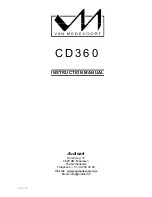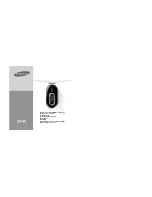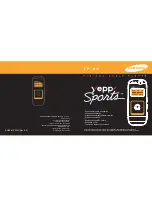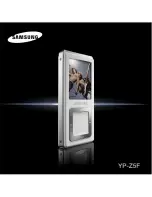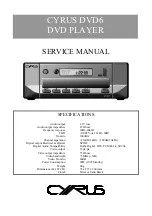
45
VQT2H73
Re
fe
re
n
ce
JPEG (Joint Photographic Experts Group)
This is a system used for compressing/decoding colour still
pictures. If you select JPEG as the storage system on digital
cameras, etc., the data will be compressed to 1/10–1/100 of its
original size. The benefit of JPEG is less deterioration in picture
quality considering the degree of compression.
LPCM (Linear PCM)
This is a type of PCM format.
These are uncompressed digital signals, similar to those found
on CDs.
MPEG2 (Moving Picture Experts Group)
A standard for efficiently compressing and expanding colour
video.
MPEG2 is a compression standard used for DVD and satellite
based digital broadcasting.
MP3 (MPEG Audio Layer 3)
An audio compression method that compresses audio to
approximately one tenth of its size without any significant loss
of audio quality.
P4HD (Pixel Precision Progressive Processing for HD)
This is a processor which makes use of an exclusive
Panasonic algorithm. Various processing is supported,
including a high-level conversion of the TV scanning format
from interlace to progressive and a high-level conversion of
standard resolution (480i or 576i) video signal to a 1080 High
Definition video signal.
Consequently, this unit is able to provide video of optimal
resolution to the connected TV.
Pan&Scan/Letterbox
In general, DVD-Video are produced with the intention that they
be viewed on a widescreen television (16:9 aspect ratio), so
images often don’t fit regular (4:3 aspect ratio) televisions. Two
styles of picture, “Pan & Scan” and “Letterbox”, deal with this
problem.
PCM (Pulse Code Modulation)
This is one format for converting analogue audio into digital
audio, enabling you to enjoy digital audio with no hassle.
Picture-in-picture
This is a function of BD-Video that plays the primary video and
secondary video simultaneously. For instance, the function is
capable of playing the original movie as the primary video while
playing video commentary from the film director on a small
screen as a secondary video.
Progressive/Interlace
The PAL video signal standard has 625 (or 576) interlaced (i)
scan lines, whereas progressive scanning, called 625p (or
576p), uses twice the number of scan lines. For the NTSC
standard, these are called 525i (or 480i) and 525p (or 480p)
respectively.
Using progressive output, you can enjoy the high-resolution
video recorded on media such as DVD-Video.
Your television must be compatible to enjoy progressive video.
Panasonic televisions with 625 (576)/50i · 50p, 525 (480)/60i ·
60p input terminals are progressive compatible.
Sampling frequency
Sampling is the process of converting the heights of sound
wave (analogue signal) samples taken at set periods into digits
(digital encoding). Sampling frequency is the number of
samples taken per second, so larger numbers mean more
faithful reproduction of the original sound.
x.v.Colour™
x.v.Colour™ is a name for devices that are compatible with the
xvYCC format, an international standard for expanded colour in
motion pictures, and that follow the rules for signal
transmission.
You can enjoy vivid colours of wider colour ranges for a more
realistic picture when connected to a TV that supports the
x.v.Colour™ with HDMI cable.
1080i
In one high definition image, 1080 (1125) alternating scan lines
pass to create an interlaced image. Because 1080i (1125i)
more than doubles current television broadcasts of 480i (525i),
the detail is much clearer and creates a more realistic and rich
image.
1080p
In one high definition image, 1080 (1125) scan lines pass at the
same time to create a progressive image. Since progressive
video does not alternate scan lines like interlace, there is a
minimal amount of screen flicker.
24p
This is a progressive image recorded at a rate of 24 frames per
second.
720p
In one high definition image, 720 (750) scan lines pass at the
same time to create a progressive image. Since progressive
video does not alternate scan lines like interlace, there is a
minimal amount of screen flicker.
Pan&Scan: The sides are cut off so the
picture fills the screen.
Letterbox:
Black bands appear at the top
and bottom of the picture so the
picture itself appears in an
aspect ratio of 16:9.
VQT2H73~Body1_mst.fm 45 ページ 2010年1月22日 金曜日 午前9時55分



















